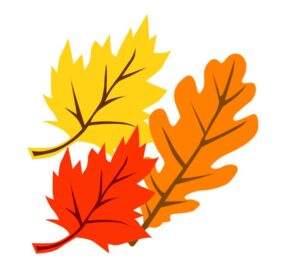Sharing is caring!
Welcome to the third post in our Fall Homeschool Science Series! Be sure to read this post first for my tips and thoughts on teaching chemistry to kids and find out about the other experiments in the series! Today, we will answer the question: “Why do leaves change color in the fall?” I will provide some background information. You may read this beforehand or read it together with your kids. I also have a free printable note-booking pages with the experiment as well as room to record your data.
Leaves falling and changing colors!
The fall is such a beautiful time of year with amazing chemistry to observe! You may notice that as the temperatures drop and the days become shorter, the leaves start changing from green to orange, yellow, red, or even purple! This is particularly apparent in Northern regions in the United States.
Summer Solstice and Fall Equinox
From about June 21st until December 21st, the amount of daylight decreases due to the earth’s tilt and position compared to the sun. This is easy to remember if you know that the Nativity of St. John the Baptist falls on June 24th.
What does St. John the Baptist have to do with this??
From around the time of his feast day until Christmas the amount of daylight decreases. In the gospel of John 3:30, St. John the Baptist is remembered for saying, “He must increase; I must decrease.”
He is saying that he must decrease himself to allow Christ to work and to allow Christ to increase and radiate from him. Pretty cool how Holy Mother Church sets this up since the sunlight literally decreases from the date near St. John the Baptist’s Nativity until Christmas when the literal Light of the World is born!
How do you like that liturgical/science/nature connection?
What is chlorophyll?
Leaves contain a compound called “chlorophyll.” Leaves actually contain different types of chlorophyll that cause the different colors. Leaves contain green chlorophyll, chlorophyll a which blue-green), and/or chlorophyll-b which is yellow-green. Leaves contain other molecules besides chlorophyll that cause the yellow, orange, red, an/or purple colors that we observe in the fall.
In the fall, the cooler temps and decreased amounts of sunlight cause the leaves to stop producing chlorophyll. This allows the other molecules to (literally) shine through! But, does the chlorophyll change into these other molecules, or are the molecules that cause the different colors always present?
Let’s do an experiment to find out!
The Science Experiment
All experiments must be performed with adult supervision. You should also perform this experiment outside or in a room with open windows due to the use of rubbing alcohol.
We can spot evidence of different colorful molecules in a leaf with this experiment. The fall is the perfect time to perform this experiments because you should have access to plenty of freshly fallen leaves! If you live in a warmer climate, you can use dark green leafy vegetables such as spinach to perform this experiment. Here are all of the materials you will need:
- 3-5 pieces of spinach or 3-5 fresh fall leaves
Small jar or small drinking cup
Rubbing Alcohol
Metal Spoon
Aluminum foil (small square to fit over the top of the jar/cup)
Scissors
Coffee filters
Pencil
Tape
Free Printable Lab Notebook Pages
I have made some free printable lab note-booking pages for your children (and you!) to record your hypotheses, observations, and results! You can access them by subscribing. You will receive one email confirming your subscription and another email with a link to the subscriber library and password. Save the second email so that you can always access my free printables for you!
Alternatively, you may also just wish to perform the experiments and lead the children in an open discussion. Some questions to get you started are:
- Why do you think XYZ happened in this experiment?
- What was your favorite part of the experiment and why?
- What other related experiments would you like to try?
- How could we improve this experiment?
Science is a gift from God
I hope you enjoy this fun fall leaves experiments with your kids! Always remind them that science is a gift from God, and it is a privilege that He allows us a small peak into how His wonderful world works!
Sharing is caring!



